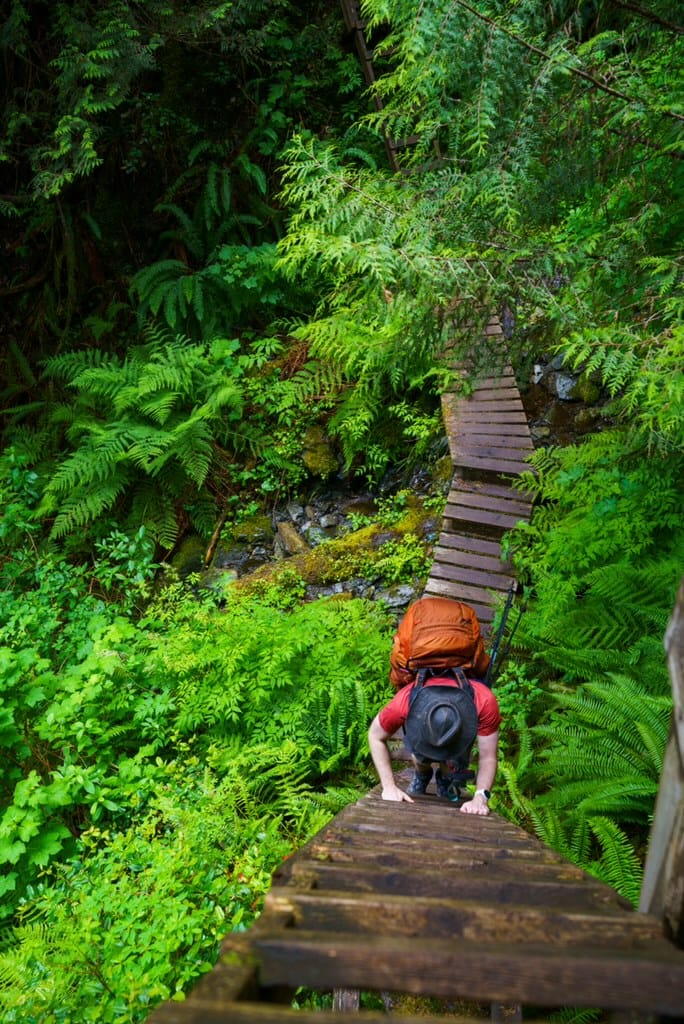The Insider - June 2024
On the delegation trap, the best newsletters in your inbox, and the West Coast Trail.

Hi everyone,
Welcome to the June edition of the Insider. Do you know someone who would enjoy the Insider? Forward this email to them and they can subscribe here.
The delegation trap
There’s a common mistake leaders make when delegating. It goes like this: First, a leader feels the need to “level up.” They delegate and empower their team, believing that getting out of the way is best for everyone. But soon, they’re dissatisfied because departments or initiatives aren't delivering at the standard or speed they expect. In response, they reinsert themselves and reclaim control. The team is confused and frustrated, and there’s a loss of trust in both directions.
Effective delegation treads a fine line: get too far out of the way and performance could slip. But stay too involved and people could feel micromanaged. The mistake I’ve seen myself and other leaders make has been to delegate without its equal and opposite counterforce. Delegation is an expansion, and it needs a commensurate restriction somewhere else.
- Delegation without focus leads to too many competing priorities.
- Delegation without standards of excellence leads to poor quality.
- Delegation without reinforcing values and behaviors leads to inconsistencies in culture and performance.
In William Butler Yeats’s poem, The Second Coming, there’s a famous line: “Things fall apart; the centre cannot hold.” A leader of a growing organization needs to hold the center. They can delegate and still care about the details, still reinforce expectations of excellence, and still ensure that the organization’s activities are not competing but coherent. To get out the way is more often an abdication of leadership than it is a sign of effective leadership. Great leaders hold the center.
The best newsletters in your inbox
Given the state of our inboxes, we can be forgiven for not thinking of the newsletter as an art form. Most newsletters get processed and deleted. But there are a rare few that rise above, and I’ve become obsessed with the newsletter not as an email, but as a product, an art form, a tiny vertical magazine capable of immense things when done consistently: building trust, creating connection, opening up doors.
It takes real effort to stand out in the inbox, and AI will only make it harder. We will continue to be flooded in average content produced by algorithms trained on all the content ever produced.
The best newsletters cut through the noise with content that’s worth a damn, a predictable structure that people come to expect, a consistent cadence, and a clear understanding of their audience. They know exactly who that person is on the other side of the inbox: what they care about, why they open the newsletter, and what role it plays in their life.
I’m building a new business and partnering with my friend and fellow newsletter writer Kyle Westaway to make exceptional newsletters effortless. For teams who believe they’re leaving opportunities on the table by not resonating with their audience, and are spread too thin to deliver a high-quality newsletter consistently, we write and produce newsletters that stand out and build trust. If you’re looking to level up your newsletter, I’d love to connect.
What I am reading
- The Colorado River gets most of the press about droughts and climate change in the west. But another major river, the Rio Grande, is facing an historic crisis and creating tension with Mexico. The New Yorker.
- The return of savoring what we read. What the rise of high-end print magazines tells us about our relationship to digital content. The New York Times.
- 40 acres and a lie. Mother Jones published an ambitious multi-article project on the government program that gave formerly enslaved people land after the Civil War, only to take nearly all of it back a year later. Mother Jones.
- We have high expectations for AI. An essay explores the false digital gods created by techno-optimists. The Walrus.
- Why are Gaza protests happening mostly at elite colleges? David Brooks gives three reasons why elite progressivism is so different from working-class progressivism. The New York Times.
Something personal
The trail on day 1 was knotted with roots and soaked in mud. Progress was slow. It took us five hours to hike three miles, and we down-climbed 300 feet on creaky ladders to reach our beachside campsite. There we met hikers on their last day, and they warned us. The map is wrong, they said; the full trail is more like 68 miles, not 48.
The West Coast Trail traces a section of the outer coast of Vancouver Island in British Columbia. It is Canada’s most popular backcountry hike. In January we landed a coveted permit and had been preparing ever since. The trouble started on day 2 as we hiked along the rocky coastline. In the forest there was mud, but on the beach there were slick boulders the size of minivans to climb over and entire trunks of Sitka spruce strewn about like matches. On one stretch, it took us 30 minutes to go 100 feet. On day 3, we hiked for 10 hours through thick mud and up and down dozens of ladders in dangerous states of disrepair: moldy wood, missing rungs. We wondered how many more days before the ladders would give way. On day 4, we covered 19 miles over 12 hours, at one point smelling the dank odor of a bear somewhere in the thicket.
On the beach, it was easier to see the bears. We used a tide chart to make it around rocky points when the tide was out—balancing along the coastal shelf as crabs skittered underfoot. When the tide was in, our heels dug into soft sand with each step. In the evenings, we camped on the beach, spooning dehydrated meals as we watched humpback whales feed off the shore.
We made it out on day 6, our relationship never stronger. But as two first-born optimizers, Lisa and I were caught off guard by the intensity and danger. All the desktop research and 2-dimensional preparation mattered little. In a digital age where society is awash in information, we’ve convinced ourselves that the more we know the better we will be. The idea that information is power needs to be occasionally pierced with the truth of our vulnerability, our unknowing, our place in the grand array. To be surprised by this, as we were, is an indication of life carefully engineered for control. Somewhere on that wrong map, far away from the online forums and gear checklists, amidst the weather and the ladders and the tides and the mud, there we were, finding our way.
~~~~
Signed,
Banks
